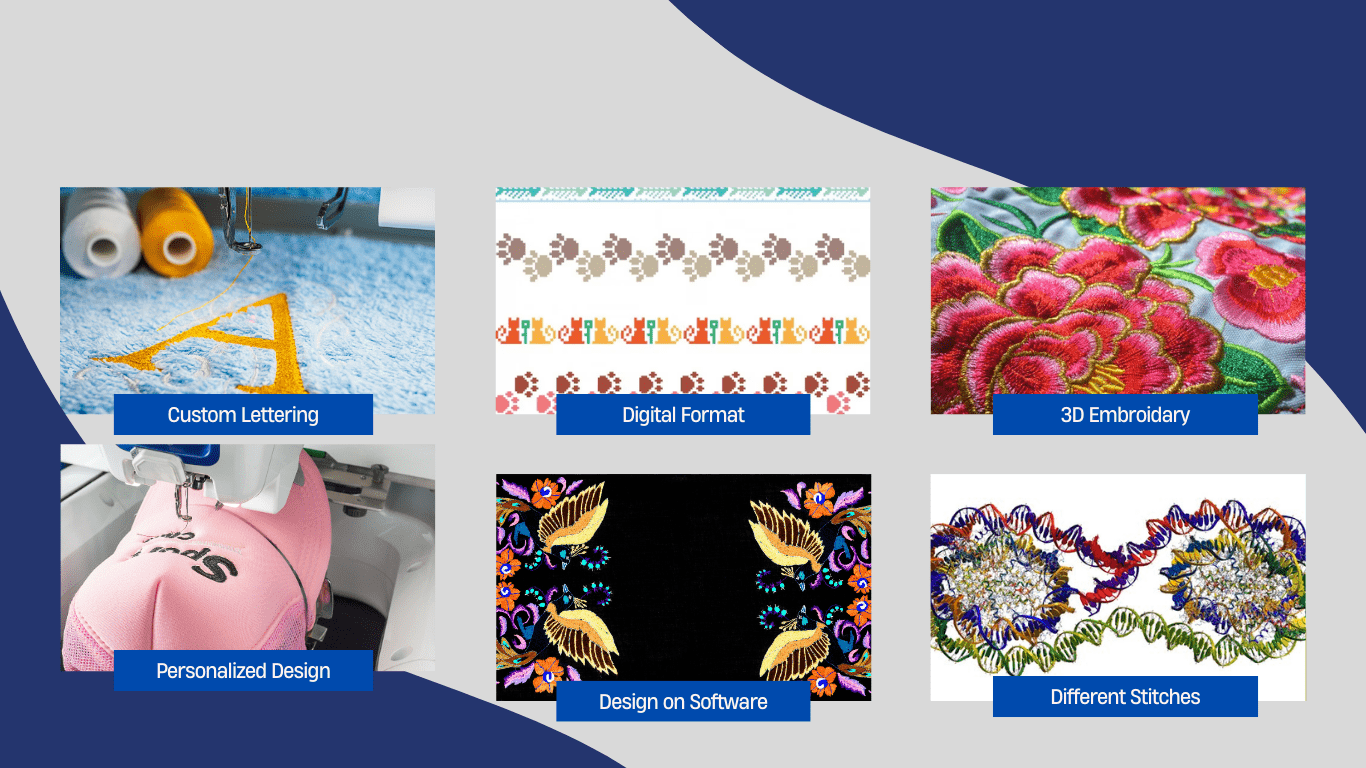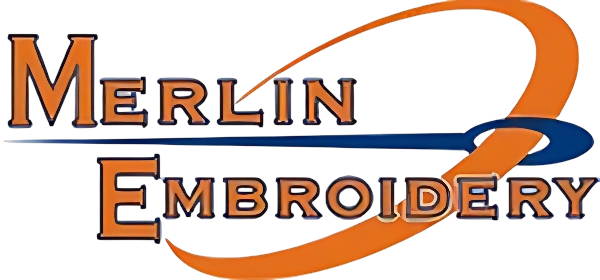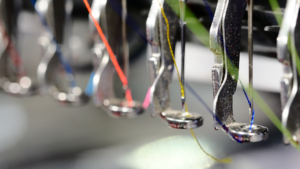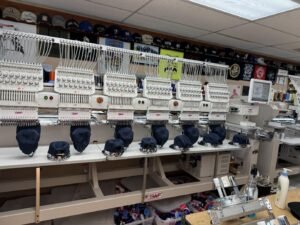The Future Of Embroidery: How Technology Is Transforming The Craft
Have you ever wondered how embroidery, a craft that has been around for centuries, is evolving in today’s digital age? The intersection of technology and tradition is paving the way for exciting developments in embroidery. Whether you’re a seasoned stitcher or a curious beginner, understanding how these changes are shaping the future of embroidery can be both enlightening and inspiring.

This image is property of cdn.awesomepatternstudio.com.
The Digital Transformation of Embroidery
Digital Embroidery Machines
Gone are the days when embroidery was purely a manual craft. Digital embroidery machines have revolutionized the way designs are transferred to fabric. These machines are equipped with advanced software that can convert intricate patterns into stitch-ready formats. What used to take hours to complete by hand can now be done in a fraction of the time with digital precision.
Software and Design Programs
Modern embroidery is not just about the physical act of stitching; it’s also about the digital design process. Powerful software programs like Adobe Illustrator and CorelDRAW can be used to create complex patterns that are then digitized for embroidery. Even more specialized software, such as Wilcom and Embird, offer features tailored specifically for embroidery design, from thread color simulations to stitch angle adjustments.
| Software Tools | Features |
|---|---|
| Adobe Illustrator | Vector design, pattern creation, color matching |
| CorelDRAW | Image tracing, vector conversion, detail adjustments |
| Wilcom | Thread color simulation, stitch angle adjustments, design digitization |
| Embird | Pattern creation, stitching simulation, embroidery editing |
Materials and Innovation
Advanced Threads and Fabrics
The choice of threads and fabrics has expanded substantially thanks to technological advancements. High-performance threads that resist fading, tearing, and fraying are now more readily available. They come in various materials, including cotton, silk, metallic fibers, and polyester. These threads can also be coated with specialized chemicals to enhance their durability and visual appeal.
Sustainable and Eco-Friendly Options
Sustainability is becoming an integral part of the embroidery community. Many companies are offering eco-friendly threads made from recycled materials or natural fibers. Even the fabrics you stitch on are evolving, with sustainable options such as organic cotton and biodegradable synthetics becoming more common.

This image is property of a.storyblok.com.
Online Communities and Resources
Embroidery Forums and Social Media
The digital age has made it easier than ever to connect with fellow embroidery enthusiasts. Online forums and social media platforms like Reddit and Instagram have vibrant communities where you can share your work, ask for advice, and find inspiration.
Online Tutorials and Workshops
You don’t have to enroll in a local class to learn new embroidery techniques or improve your skills anymore. Numerous online platforms offer tutorials, courses, and workshops. Websites like Skillshare, Udemy, and YouTube host a plethora of classes ranging from beginner to advanced levels.
The Impact of 3D Printing
3D-Printed Embroidery Tools
3D printing is not just for creating prototypes or models; it’s also making its mark in the world of embroidery. Customizable embroidery hoops, design templates, and even specialized needles can now be produced using 3D printing technology. This allows for a level of customization and precision that was previously unattainable.
Embroidery on 3D-Printed Fabrics
Imagine stitching on a fabric that was created using a 3D printer. This is no longer a futuristic fantasy. Researchers and designers are experimenting with creating textiles via 3D printing, opening up new possibilities for embroidery. These fabrics can have specialized textures, patterns, and even integrated electronic components.

This image is property of miro.medium.com.
Automation and Artificial Intelligence
Automated Stitching
Automation is becoming increasingly prevalent in many industries, and embroidery is no exception. Computerized embroidery machines can now execute complex stitching patterns automatically, freeing you up to focus on the creative aspects of design. Some high-end machines come with features like multi-needle capabilities and built-in design libraries to further streamline the process.
AI-Powered Design Suggestions
Artificial Intelligence (AI) is starting to play a role in the design phase of embroidery. Machine learning algorithms can analyze your past projects, understand your style preferences, and even suggest new design ideas. Some advanced software tools can generate stitching patterns based on digital images, making it easier than ever to translate your vision into stitches.
The Integration of Wearable Technology
Smart Textiles
Smart textiles are fabrics embedded with electronic components like sensors, LEDs, and microcontrollers. While this may sound like something out of a sci-fi movie, it’s a reality that’s rapidly gaining traction. Imagine creating an embroidered shirt that can monitor your heart rate or a jacket with light-up designs. The possibilities are endless.
Conductive Threads
At the intersection of embroidery and technology, conductive threads are making waves. These threads can carry electrical current, making them ideal for integrating electronics into your embroidered projects. They offer endless possibilities for creating interactive and functional textile art.

This image is property of cdn.awesomepatternstudio.com.
Augmented Reality and Virtual Reality
AR for Design Visualization
Augmented Reality (AR) can be a powerful tool for visualizing your embroidery designs before you start stitching. By using AR apps, you can project digital designs onto real-world fabrics, allowing you to see how the final product will look. This can save you a lot of trial and error in the design process.
VR Embroidery Classes
Virtual Reality (VR) is also stepping into the embroidery scene, providing immersive learning experiences. Imagine taking a virtual tour of a renowned embroidery studio or attending a workshop with a master embroiderer, all from the comfort of your home. VR makes this possible, offering a new way to learn and experience embroidery.
The Intersection with Fashion Industry
High Fashion and Embroidery
Embroidery has always had a place in high fashion, but technology is taking it to new heights. Designers are using digital tools to create intricate, custom patterns that would be nearly impossible to achieve by hand. These innovations are making embroidery a standout feature in contemporary fashion.
Fast Fashion and Mass Production
On the flip side, technology is making it easier for fast fashion brands to incorporate embroidery into their mass-produced items. Automated machines and digital designs streamline the production process, making embroidered clothing more accessible to the general public.

This image is property of a.storyblok.com.
The Role of Blockchain in Authenticity
Provenance and Authenticity
Blockchain technology, often associated with cryptocurrencies, is finding applications in various other fields, including embroidery. Blockchain can be used to verify the authenticity and provenance of high-end embroidered items. This adds another layer of value and trust for consumers looking for genuine, high-quality products.
Smart Contracts
Smart contracts could also play a role in the future of embroidery, particularly in custom and commissioned work. These blockchain-based agreements can ensure that terms are met and payments are made securely, protecting both artists and clients.
The Potential Challenges
Skill Adaptation
With all these technological advancements, there is a learning curve involved. Traditional embroiderers may find it challenging to adapt to new tools and methods. However, this also presents an opportunity for growth and skill diversification.
Cost of Technology
Advanced embroidery machines, specialized software, and other tech innovations can be expensive. The initial investment may be a barrier for some, but as technology becomes more widespread, costs are expected to decrease over time.
Data Security
As with any digital tool, data security is a concern. When your designs and personal information are stored online, they are potentially vulnerable to cyber-attacks. Taking proper precautions, such as using secure networks and regularly updating software, is essential.
The Future Outlook
Personalized Embroidery
As technology continues to advance, the trend towards personalized and customized embroidery is likely to grow. AI and machine learning can help create designs tailored to individual preferences, making each piece unique.
Integration with Other Crafts
Embroidery is likely to become even more interdisciplinary, integrating with other crafts and art forms. Whether it’s combining embroidery with painting, sculpture, or even digital art, the future holds endless possibilities.
Sustainability Focus
With growing awareness about environmental issues, sustainability will remain a significant focus. Eco-friendly materials and practices will likely become the norm rather than the exception, influencing both amateur and professional embroiderers.
Future Innovations
Finally, we can only imagine the future innovations that await the world of embroidery. From advancements in materials to new stitching techniques and beyond, the craft is on an exciting trajectory that blends tradition with technology.
By staying informed about these trends and developments, you can better appreciate the rich tapestry that is the future of embroidery. Whether you choose to adopt these new technologies or stick to traditional methods, the future of this timeless craft looks incredibly bright.



